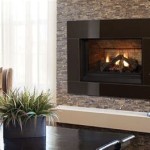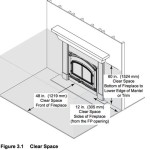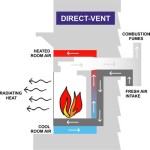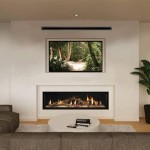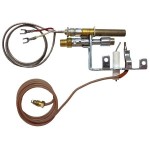Table Top Ethanol Fireplaces: A Guide to Ambiance and Safety
Table top ethanol fireplaces offer a convenient and aesthetically pleasing way to introduce warmth and ambiance into various living spaces. These self-contained units utilize liquid ethanol fuel to produce a real flame without the need for traditional venting systems like chimneys or flues. This makes them particularly attractive for apartments, condos, or homes where installing a conventional fireplace is impractical. Understanding the functionality, safety considerations, and maintenance requirements of table top ethanol fireplaces is crucial for responsible ownership and enjoyment.
The allure of a table top ethanol fireplace lies in its portability and ease of use. Unlike wood-burning fireplaces, there is no need to gather firewood or deal with ashes and soot. They offer a cleaner burning experience, emitting minimal smoke, odor, and particulate matter compared to traditional options. This contributes to a more pleasant indoor environment, especially for those sensitive to air quality. These fireplaces are typically compact in size, making them easily adaptable to different room layouts and decorative styles. They can serve as a focal point on a dining table, coffee table, or as an accent piece on a mantelpiece.
Understanding the Mechanics of Ethanol Fireplaces
The core functionality of a table top ethanol fireplace centers around the combustion of liquid ethanol fuel. Denatured alcohol, specifically ethanol, is the fuel source of choice. This type of alcohol is rendered unfit for human consumption through the addition of denaturants, making it safe for use in fireplaces. The fuel is poured into a designated burner container within the fireplace unit. A wick or absorbent material may be present in some models to aid in the evaporation and ignition of the ethanol. When ignited with a lighter or match, the ethanol vaporizes and burns, producing a clean, consistent flame. The flame's height and heat output are often adjustable through a sliding or rotating mechanism that regulates the oxygen supply to the burner.
The design of the burner is critical to the safe and efficient operation of the fireplace. It must be constructed from heat-resistant materials, typically stainless steel, to withstand the high temperatures generated during combustion. The burner's design should also prevent fuel spillage and ensure a controlled burn. Some models incorporate safety features such as anti-tip mechanisms or flame snuffers to quickly extinguish the flame in case of emergencies. The surrounding structure of the fireplace, often made of materials like glass, metal, or stone, serves to contain the flame and provide a decorative enclosure.
Safety Considerations and Best Practices
While table top ethanol fireplaces are generally considered safe when used correctly, adhering to safety guidelines is paramount. Never leave a burning fireplace unattended. Keep a close watch on the flame and ensure children and pets are kept at a safe distance to prevent accidental contact. Always use the type of fuel specifically recommended by the manufacturer. Using alternative fuels can lead to dangerous conditions and damage the fireplace.
Refueling the fireplace should only be done when the flame is completely extinguished and the burner has cooled down. Pouring fuel onto a hot burner can cause a flashback or explosion. Ensure adequate ventilation in the room when using the fireplace. While ethanol fireplaces produce minimal emissions, proper air circulation helps to prevent the buildup of carbon dioxide. It is also recommended to have a fire extinguisher readily available in case of an emergency. Regular inspection of the fireplace for any signs of damage or leaks is essential for maintaining its safety and functionality. Follow the manufacturer’s instructions meticulously regarding fuel levels and burn times.
Carbon Monoxide (CO) detectors are a good idea to add to any room in which you will be burning anything for any length of time, just to ensure your safety.
Maintenance and Long-Term Care
Proper maintenance contributes to the longevity and optimal performance of a table top ethanol fireplace. Regularly clean the exterior surfaces of the fireplace with a soft cloth to remove dust and smudges. The burner should be inspected periodically for any residue or buildup. Some burners can be disassembled for cleaning, while others require wiping down with a damp cloth. Ensure the burner is completely dry before refilling with fuel.
Empty the burner and clean it thoroughly if the fireplace is not going to be used for an extended period. This prevents the fuel from evaporating and leaving behind a sticky residue that can clog the burner. Store the fireplace in a safe and dry location when not in use. When cleaning, avoid the use of abrasive cleaners or solvents, as these can damage the finish of the fireplace. Check the fuel level regularly to avoid running the fireplace dry, which can damage the burner. Addressing any minor issues promptly can prevent them from escalating into more significant problems. With proper care and attention, a table top ethanol fireplace can provide years of enjoyment and ambiance.

Homcom Portable Tabletop Ventless Bio Ethanol Fireplace With Glass Walls Broe Finish 820 157v01 The Home Depot

Outdoor Tabletop Fireplaces Get The Perfect Small Fireplace

Ethanol Tabletop Fireplace Impress With A Creative Focal Point

Vonhaus Tabletop Fireplace Bioethanol Bio Ethanol Table Top Fire Heater For Outdoor Indoor Portable 70 Min Burn Time Windproof Glass Rectangle Shape Hammer Stone Grey

Bioethanol Table Top Fire Pit Fireplace Co

Customized Smokeless Bio Ethanol Tabletop Fireplace Suppliers Good Inno Living

Livingandhome Round Bio Ethanol Tabletop Fireplace With Flame Guard Diy At B Q

Customized Bioethanol Tabletop Fireplace Suppliers Good Inno Living

Round Tabletop Fireplace Bioethanol Fireplaces Vonhaus

Kante 18 In L Concrete Rectangle Table Top Fire Pit Bowl Portable Rubbing Fireplace Denatured Smores Maker Ct Fp 001 C91948 The Home Depot
Related Posts

